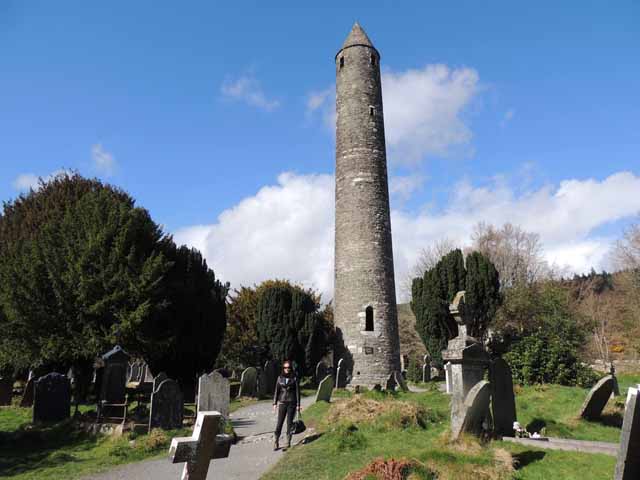Ireland is known as the land of Saints and Scholars, a land surrounded in mystery and legend.
Our monastic sites of the Early Christian Period are soaked in the history of changing religious beliefs and bloody battles against vicious invaders. Our nations transition from the ancient pagan beliefs to that of Christianity is a complicated transition that although was largely successful, we still held on tightly to the ancient beliefs of our ancestors.
To cement our conversion nothing says permanent and enduring quite like stone, many of our religious sites with the of ancient legends and are still sacred places of pilgrimage.
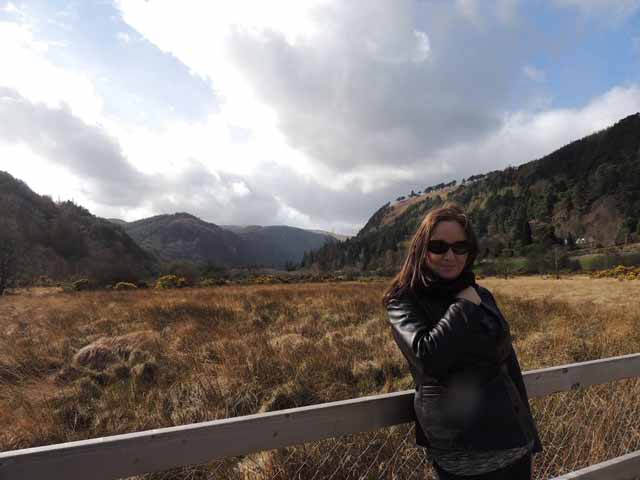
Glendalough is one of Ireland’s most famous and busiest ancient religious sites. It is nestled into the majestic surroundings of the Wicklow Mountains and Glens. Kept safe by the protective lush green forests of Wicklow. Majestic clear mountain lakes and waterfalls engulf this ancient site in a shroud of mystery. Where the ancient beliefs of Ireland meet the religious world of Medieval Christianity.
The ancient and spiritual pagan beliefs in their sacred sites, meeting the start of a change in the belief systems of Ireland. Merging to create a unique culture that has survived the ravages of time.
The whispers of ancient warriors and chants of Druids are melding in our souls with that of ancient Monks changing the religious beliefs surrounded by one of the world’s most ancient cultures. Glendalough is a mystical landscape; you are engulfed in the peace of the Irish landscape that has not change for millennium.
It is spiritual retreat that allows the visitor to become a part of the legends and history of Ireland. You will see our land through new peaceful eyes surrounded by the beauty of nature.
The historical aspects of Glendalough add to the drama of this ancient landscape. The ruins we see are a shadowy reminder of our legendry past and its close connections with religion both Pagan and Christian. The monastic ruins draw you in; you can feel the presence of past events. The mist from the lakes lapping around historic gravestones, moved by the force of the earth, wrapping them in a shroud of natural wonder.
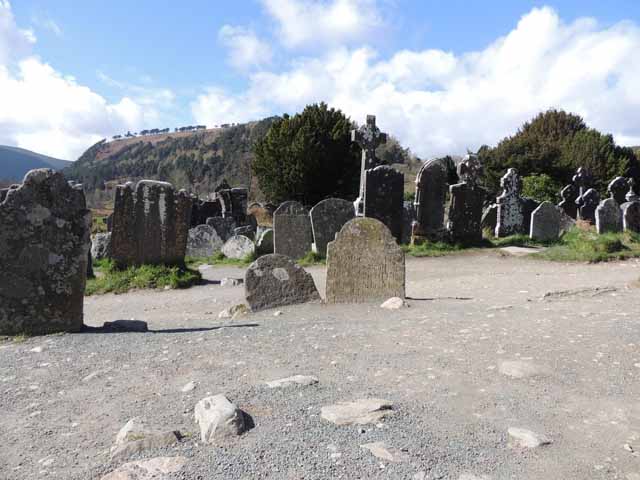
One of the jewels of Ireland’s Ancient East, Glendalough is a wondrous adventure into the past.
Home to the ruins of outstanding historic importance, Glendalough is also home to a wonderful Visitor Centre that will help you navigate this historic wonder and give you a insight into the Early Christian Period of Ireland’s past.
Glendalough is Gleann Da Louch, as gailge (in Irish) AND MEANS THE valley of the two lakes. This ancient site was founded by Saint Kevin in the 6thCentury, Kevin is said to have been a member from a powerful family that were rulers of Leinster.
He studied Christianity and later in life would return to Glendalough and found the monastic site that we see today. Kevin left us with many writings that discuss his time at Glendalough but academics today believe these writings focus more on his thoughts and fighting of inner demons.
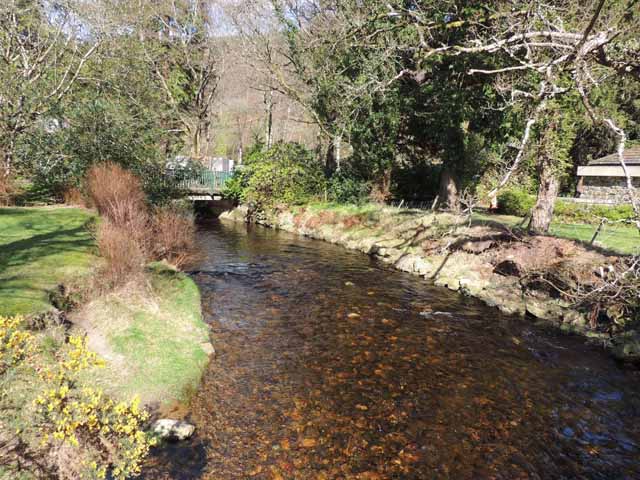
He became known as one of the holiest men in Ireland and his following grew. It is thought that he diesd in the year 618AD. Glendalough was a successful and wealthy monastic site and was to enjoy many centuries of success.
Glendalough is mentioned several occasions in the Irish Annals, these entries in the Annals often refer to the many raids that would have occurred at Glendalough from the many Viking invaders that were attracted to the glorious wealth that was contained within Irelands monastic.
The Viking invaders of Ireland spent so much time at Glendalough that the timbers from the vast oak forests of Wicklow were to be used in the mammoth construction of a massive Viking Longship, the second largest that has been recorded.
In 1111 the Synod of Rath Breasaill took place, this saw Glendalough, designating Glendalough as one of the 2 Christian dioceses of the area of North Leinster. The importance of Glendalough was cemented in one of Irelands most famous medieval books The Book of Glendalough that was written in approximately 1131.
One of Ireland’s most famous Saints is deeply associated with Glendalough. Saint Laurence O’Toole of the powerful O’Toole Tuath of Wicklow would become Abbot of Glendalough and in 1162 he would become the Archbishop of Dublin. Saint Laurence O’Toole and his family played a pivotal role during the Norman Invasion of Ireland.
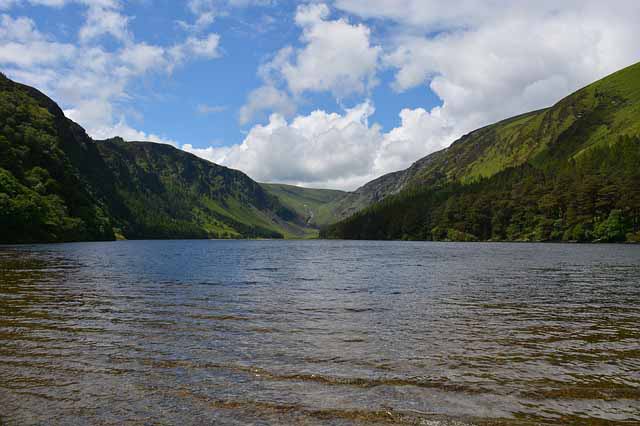
His sister Mor O’Toole was the wife of the infamous deposed King of Lenister Dermot MacMurrough and mother of the Princess Aoife MacMurrough. St Laurence O’Toole was the man who presided over one of Ireland most famous marriages, the wedding of his niece Aoife and the Norman Lord Richard De Clare, better known as Strongbow.
This union would lead to the establishment of one of the medieval worlds most powerful dynasties. This line would be carried on by the daughter of Strongbow and Aoife, Isabel De Clare, who would go on to marry William Marshal, The Greatest Knight that ever lived. St Laurence would famously often return to Glendalough to the screen solitude of an area known as Saint Kevin’s Bed.
This was his spiritual retrieve and would become closely associated with this famous Medieval Saint.
The dawning of 1214 would see Glendalough and Dublin Dioceses joined together and the popularity and fame of Glendalough took a turn for the worst. In 1398 English forces destroyed the holy settlement of Glendalough but it was to become one of the most important places of pilgrimage in Ireland.
The ruins that we see today are but a shadow of what this once thriving site would have contained. Glendalough would have been a hive of activity with monks and a lay population busily working together.
These would have been workshops, farm dwellings, a hospital, scriptoriums and many other buildings that did not survive the ravages of time. Much of what we see today date from the 10th/12thcenturies. Glendalough is a Titular See of the Catholic Church.

There are many famous buildings of historic importance located at Glendalough. These now ruined structures show us the importance and wealth that was once held by this sacred site. Its survival also shows its intrinsic importance to the local people who for centuries protected this once glorious site.
The many churches, high crosses and gravestones mark and area that is so soaked in Ireland’s history that it is one of the most visited sites in our beautiful country.
These ancient buildings are numerous and include the magnificent Gateway that draws you into the ancient site of Glendalough.
The massive medieval Round Tower is the tallest of the surviving structures and can be see for miles around. Round Towers like you see at Glendalough have long been associated with religious settlements of the medieval periods in Irelands history. They had several functions.
They were Bell Towers that would have called the monks and local people to prayer. They were also places of refuge. With the many invaders that were crashing onto Ireland’s shores, monasteries like Glendalough became associated with wealth.
These towers were places of regulate for people and for protecting the precious items held within the monasteries.
The Round Tower at Glendalough is 20 meters high and is constructed with Micra Slate that is interspersed with local granite. It is 20 meters high allowing it extensive views of the surrounding area and the door which would have been accessed by a ladder is 3.5 meters above ground level. The Cathedral is the largest structure within the monastic site and dates from the 12th/13thCenturies; this is a multiphase structure with aspects associated with the medieval periods. Outside the cathedral is an Early Irish Cross that is often referred to as Saint Kevin’s Cross.
The Priests House was although a ruin did undergo extensive reconstruction with the original stones; this reconstruction was made possible by using a sketch by the Beranger. It is built in the Romanesque style of architecture.
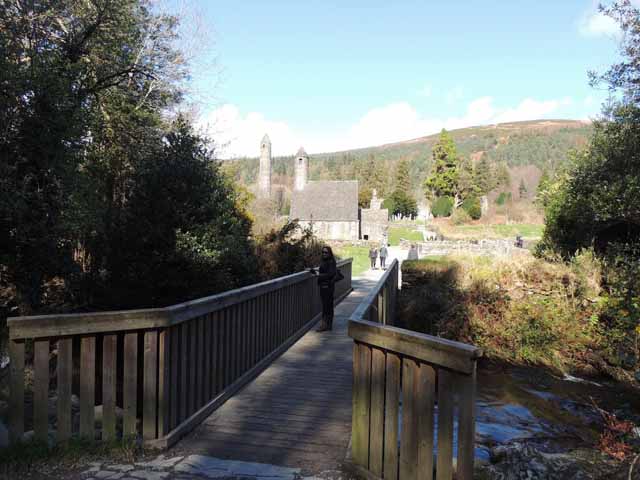
The original function of this structure has been lost to the ravages of time but some say it was a sacred place, which housed the relics of Saint Kevin.
There are several churches and other buildings at the monastic site of Glendalough. All with their own story and significant meaning to this ancient site.
Throughout the area of Glendalough there are many sites of religious and historic significance. As we mentioned Saint Kevin was the founder and he was the first Abbot of Glendalough, he was also ordained Bishop Lugidus.
Saint Kevin first went to Glendalough where he lived a hermit’s life. He is said to have slept in a cave, which is now known as Kevin’s Bed. St Kevin’s bed is a man made cave measuring 4 foot wide and 3 feet high and is cut into the rock on the face of a mountain which overlooks the upper lake of Glendalough. The terrain that leads to the cave is very dangerous. According to local legend St Laurence O’Toole used the cave when he was in Glendalough for Lent.
Saint Kevin is said to have lived a very lonely life but he was happy to share this existence with the local animals and birds that inhabited the area of Glendalough. He found substance form what was available locally on the land.
The legend also states that Saint Kevin lived this life for 7 years.
Many of his followers arrived at Glendalough and formed a permanent settlement was set up enclosed by a wall which is now known as Kevin’s Cell. In 544 it is said that St Kevin moved to the legendry site of the Hill Uisneach to visit St Columba, Comgall and Cannich. He then went to Clonmacnoise where St Cieran died a few days earlier.He later returned to Glendalough where he lived a life of teaching and prayer.
St Kevin is the patron saint of the diocese of Dublin. Glendalough was to become one of the main sites of religious pilgrimage in Ireland. St Kevin was canonized by Pope Pius X in 1903. Glendalough is an area that is completely intertwined with the history of Ireland, somehow bringing these stories to life.
he natural world become a part of our past giving life to the legends of Ireland. Glendalough is a must see for anyone visiting in Ireland. It is an area that will enchant your soul and bring you a little bit closer to the history and spirituality of Ireland.

